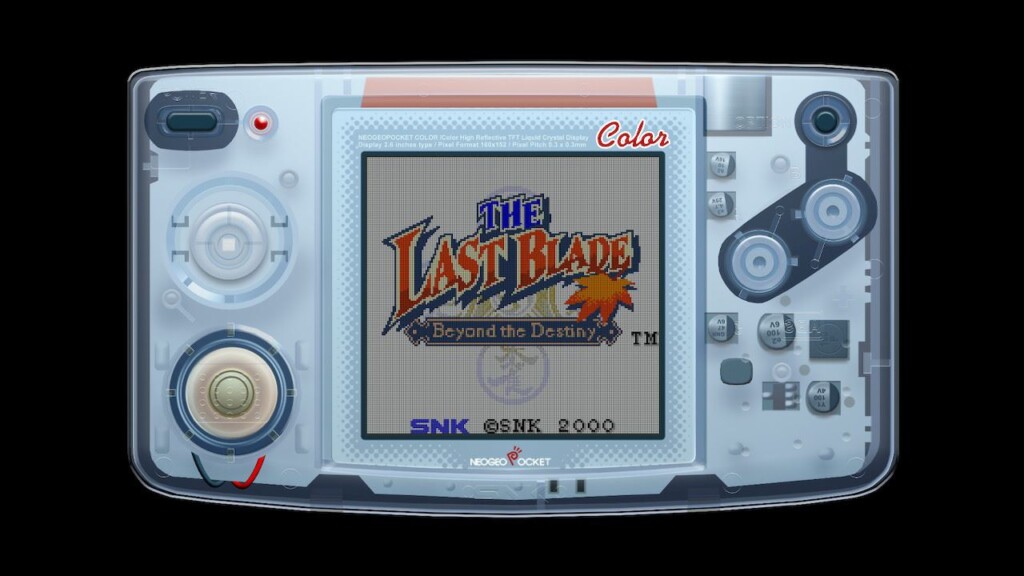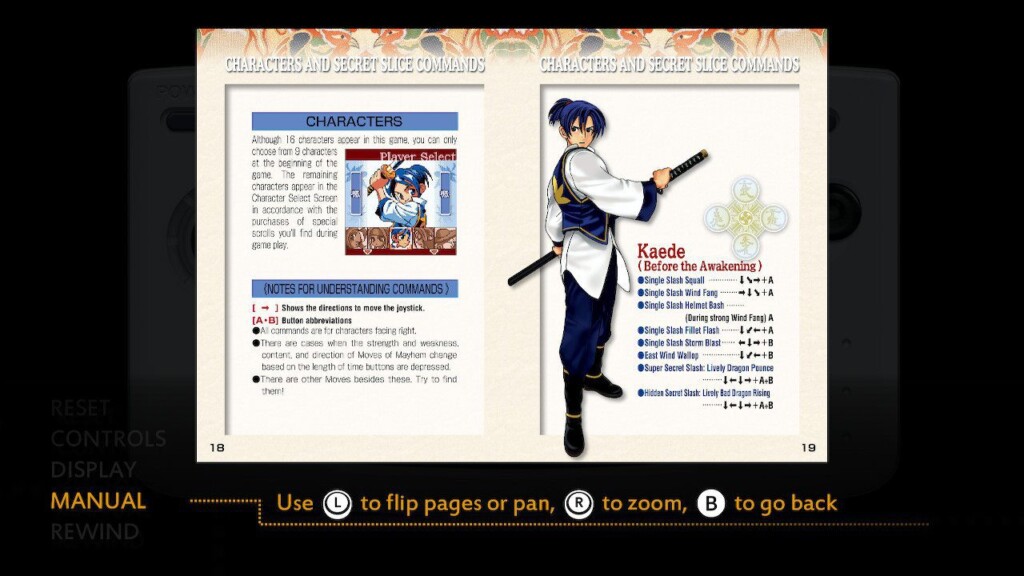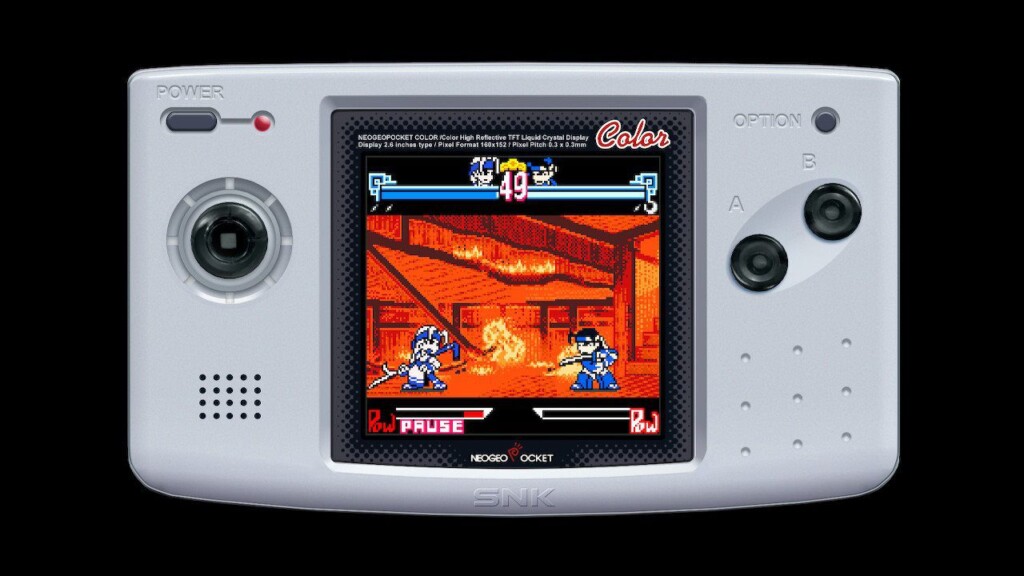I am a major fan of all things NEO GEO. As a kid it was this holy grail of machines that managed to be unique and revolutionary even if I didn’t understand why at the time. It was always a surprise finding a NEO GEO machine as the technology allowed each cabinet to hold a random mystery game that you never played before. I was lucky that the few local arcades in my area had a number of machines and were always swapping out games, one machine evening being the 6-cart version that had all the great titles of the time –and World Heroes. There was even a legendary NEO GEO mini cabinet in the kids section of a particular arcade that I still plan on owning someday to share with my future kids. I love the damn NEO GEO so much that I have a 2-cart in my garage.
But the story of the NEO GEO was almost exclusively relegated to the arcade in the United States. Sure, there was the MVS home edition but that was something I never saw outside the few magazine features and the NEO GEO CD that I still haven’t seen in person. Even your rich friend and those random kids that everyone knew with wealthy parents didn’t even have a NEO GEO AES in their home. This meant that at the arcades we crammed around KOF because of its unique style but at home Capcom was king with Street Fighter. And as arcades began to die off Capcom basically ruled the roost with the few NEO GEO games hitting home consoles being poor imitations.
This means that the NEO GEO Pocket and Pocket Color was nearly nonexistent in the United States even though it did release in limited markets. I didn’t even know about the thing until the age of the internet and long after is had gone. We were playing Mortal Kombat and Street Fighter II on the Game Boy while Japanese gamers were enjoying The Last Blade on the NEO GEO Pocket Color. It’s why I now consider the NEO GEO Pocket/Color as being the greatest dedicated handheld console of all time and one I am so sorry that we missed out on. But that only means that these titles are new for so many people and The Last Blade: Beyond the Destiny is the perfect example of this.

The Neo Geo Pocket Color, like its arcade big brother, featured a lot of fighting games, the difference being that the Pocket only had two buttons to work with. This means that a deep fighting game shouldn’t work but somehow still does with a few tweaks. I tribute this to the fighting games being heavily modified to work within the control limitations and not simply dumbed down ports; that and the clicky joystick that made pulling off moves easier, but ill get back to that point in a minute.
What makes The Last Blade: Beyond the Destiny special is that there is a lot of added extras to offer tons of content for fans of the game. This is something almost unheard of on portable releases and the magic that makes the NEO GEO Pocket Color unique. You get the requisite Story Mode, a Survival Mode, Time Attack, and Training to round out the meat and potatoes of the experience. But the game also includes two mini-games and a power-up scroll system that lets you choose between two style of gameplay. I’m really not used to a portable entry of a series getting so much love and attention.
As for the interface you get a number of NEO GEO Pocket skins which are all based on the actual iterations of the console. There are also a few options for overlays to get the “unique” portable feel that I always hate. Look, you are here to play these classic games in the best possible quality and I don’t know a single person who uses a fake scanline filter to play a game. Unfortunately, you can’t blow up the screen to fit nicely on the screen which means playing in handheld mode is a bit fiddly even if it is technically authentic. I understand that this makes it look and feel true to the original console but I would have loved to get a blown-up 4:3 mode.
The Last Blade: Beyond the Destiny, as you might expect, is much simpler that its arcade big brothers but still has a surprising amount of depth to the gameplay. What I love is the inclusion of the games manual as you won’t be just playing and figuring things out very easily on your own mashing buttons and doing Street Fighter motions. You can think of the game as a bit of a mix of the The Last Blade 1 & 2 which means a good mix of styles. You won’t be going into battles and playing it the same each time. Characters have unique styles and what might work against one won’t work well against another. This means fights are fairly varied and require you to understand a characters strengths and weaknesses.
While The Last Blade: Beyond the Destiny has a lot of characters and a simplified fighting style it still pushes the NEO GEO Pocket Color to its limits, looking pretty great even today with animated background and slick into animations. Its also a surprisingly balanced fighter meaning that you can find your favorite character and if you invest the time to learn them you can do well with anyone. And once you do that you can experiment with other characters like I did adding a lot of replayability to the experience. The magic that helps keep things fresh is that people aren’t punching and kicking each other like in most fighting games, but instead everyone uses a, well, blade of some sort.
Adding weapons into the mix really opens up the gameplay and helps give everyone a unique style of play. This is important because ports of fighting games to portable consoles dumb things down to the point all you can actually do in most fighting games is punch and kick. Have you played Street Fighter 2 and Mortal Kombat on the Game Boy? Those titles are poor imitations where you end up punching and kicking to get anywhere and mostly forgoing the difficult to pull off moves. You go and try to play Mortal Kombat Trilogy on the Game.Com and tell me how that goes. Simply allowing for different weapons and weapon lengths makes for a deeper experience than just about any other portable fighter release at the time.

Combat is kept simple with two basic attacks mapped to the two buttons on the console. One attacks with your weapon while the other kicks. This is the same with most fighting games on portables but where things change is in the buttons themselves. Tapping a button will attack like normal but holding the button down a bit longer changes the attack type and strength. Add in a sort of Parry trigger move and you have a lot of options in combat. You can string a nice combo easily and parry a follow-up attack for more attacks. To be honest, this is one of the only portable fighting games where you can actually even pull off combos.
The Power and Speed styles you can select and scrolls you can buy with points to arm characters with various buffs also add options against characters you face to a surprising degree. If someone is blocking a lot then switching to Power mode might be best to help you break those defenses while Speed helps you more easily pull off combos when you better understand your character, with each style changing your player character. This also means you have an idea of another players style before things start to allow you to adjust your strategy.
And because this is a fighting game there is the Super meter that allows you to pull off a massive move with that very non-Capcom maneuver that requires precise timing to take advantage of. The Last Blade: Beyond the Destiny is a whole lot of fun but I do wish we would have gotten this some sort of double package. In fact, I would have preferred a NEO GEO Pocket pack with all the fighters that have already been released considering the games are so small. Thankfully, once you are done with the main game you can take part in the unlockable mini-games which include a baseball batting game and a shoot-em-up adventure.

The Last Blade: Beyond the Destiny is a fun experience only let down by the controls of the Nintendo Switch. The non micro-switch joyticks of the JoyCons means you won’t be as precise as you can be and the lack of a D-pad on the Switch doesn’t help things. I use the Hori JoyCon with a D-Pad which really helps and having a Nintendo Switch Lite negates this issue, but also means you can’t play it on the big screen.
That said, the issues against the game are extremely minor and shouldn’t turn you off, especially as you probably never played this one before. It’s worth the $8 bucks for fighting game fans and those looking for a quick pick-up-and-play game while on the go. It’s easy enough for new players to enjoy while being deep enough to allow for a number of hours of fun for those experienced in the genre. I just hope when they finish releasing all these titles we get a physical collection for the perfect NEO GEO Pocket Color experience.
Pros:
+ Solid Fighting Experience
+ Lots of Extras
+ Great Roster
Cons:
– Limited Video Options
– Nintendo Switch Controls
Final Score:
*A copy of the game was provided for review by the publisher*

